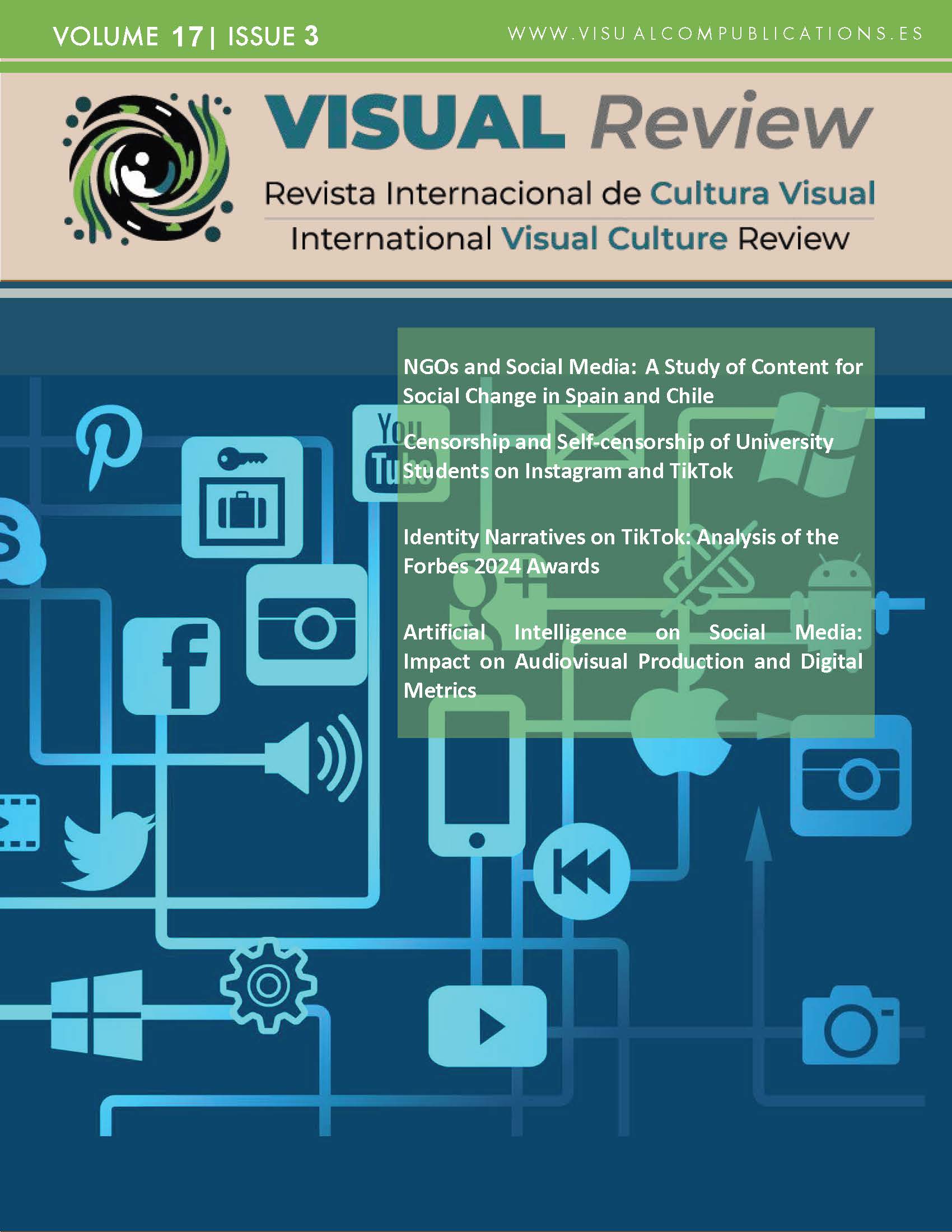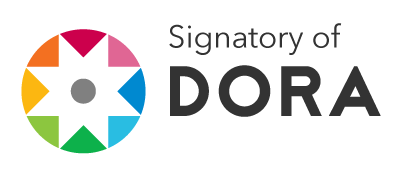Influencers-Activists 'Eco', Perceptions and Feelings
An Analysis from Neuromarketing
DOI:
https://doi.org/10.62161/revvisual.v17.5787Keywords:
Influencers, Activists, Engagement, Neuromarketing, Eye Tracking, Social Media, InstagramAbstract
In the field of social networks, people publicly committed to social, environmental or political causes are considered “activist influencers.” This article takes this emerging figure as a reference with the aim of analyzing his messages on Instagram and the impact generated by them on the audience. Through a survey and neuromarketing techniques (Eye Tracking), it has been possible to: 1) extract results on the implicit responses (attention, visual routes and emotion) produced by the messages of “activist influencers” in the environmental field and; 2) identify the explicit responses (association, coherence and credibility) of the defended causes.
Downloads
Global Statistics ℹ️
|
408
Views
|
234
Downloads
|
|
642
Total
|
|
References
Adler, R. P., & Goggin, J. (2005). What do we mean by “civic engagement”? Journal of Transformative Education, 3(3), 236-253.
BayWa r.e. (2023). Nuevo estudio de Brandwatch encargado por BayWa r.e. https://www.baywa-re.mx/es/compania/noticias/details/la-temperatura-global-aumenta-pero-la-conversacion-sobre-el-clima-disminuye
Berger, B. (2009). Political Theory, Political Science, and the End of Civic Engagement. Perspectives on Politics, 7(2), 335-350.
Brady, H. (1999). Political Participation. In J. P. Robinson, P.R. Shaver, L. S. Wrightsman (Eds.). Measures of Political Attitudes (pp. 737-801). Academic Press.
Carpini, M. X. D. (2004). Mediating Democratic Engagement: The Impact of Communications on Citizens’ Involvement in Political and Civic Life. In Handbook of political communication research (pp. 413-452). Routledge.
Carpini, M. X. D (2009). The Inherent Arbitrariness of the “News” versus “Entertainment” Distinction. "Keywords: The Public Sphere, Public Culture and Reasoned Public Choice" of the 59th Annual ICA Conference in Chicago, May 22, 2009.
Carpini, M. X. D., Cook, F. L., & Jacobs, L. R. (2004). Public deliberation, discursive participation, and Citizen Engagement: A review of the empirical literature. Annual Review of Political Science, 7, 315-344.
Cooper, T. L. (2005). Civic engagement in the Twenty‐First Century: Toward a Scholarly and Practical Agenda. Public Administration Review, 65(5), 534-535.
Della Porta, M.D. (2016). The Oxford Handbook of Social Movements (1st ed.). Oxford University Press.
Dunne, T. (2008). Good Citizen Europe. International affairs, 84(1), 13-28.
Ekman, J., & Amnå, E. (2012). Political participation and civic engagement: Towards a new typology. Human affairs, 22(3), 283-300.
Etzioni, A. (1996). A moderate communitarian proposal. Political Theory, 24(2), 155-171.
Galston, W. A. (2001). Political Knowledge, Political Engagement, and Civic Education. Annual Review of Political Science, 4, 217-234.
García Fortuny, H. (2018). ¿Están los influencers perdiendo su credibilidad?: Estudio
sobre la credibilidad que el consumidor otorga al mensaje emitido por el influencer en
la plataforma Instagram dentro del sector cosmético. Recuperado de
https://ddd.uab.cat/record/200615
Lin, H. C., Bruning, P. F., & Swarna, H. (2018). Using online opinion leaders to promote the hedonic and utilitarian value of products and services. Business horizons, 61(3), 431-442.
Jung, N., Kim, Y., & de Zúñiga, H. G. (2011). The Mediating Role of Knowledge and Efficacy in the Effects of Communication on Political Participation. Mass Communication and Society, 14(4), 407–430. https://doi.org/10.1080/15205436.2010.496135
Knoll, J., Matthes, J., & Heiss, R. (2020). The social media political participation model: A goal systems theory perspective. Convergence, 26(1), 135-156. https://doi.org/10.1177/1354856517750366
Marlowe Jr, H. A., & Arrington-Marlowe, L. L. C. (2005). Public engagement: Theory and practice. Unpublished manuscript, https://bit.ly/4jM9wEa
Martinez, L. (2021). Casos exploratorios aplicados a partir de distintos diseños metodológicos: eye-tracking fijo y online. Communication & Methods, 3(2) 125-141. https://doi.org/10.35951/v3i2.136
Martínez, L. M., & Piqueiras, P. (2024). Estrategias de comunicación pública sobre prevención y cannabis: Eye tracking y facial expression. VISUAL REVIEW. International Visual Culture Review/Revista Internacional de Cultura Visual, 16(2), 193-204. https://doi.org/10.62161/revvisual.v16.5225
Muñoz, P. (2021, October 13). The birth of the influencer-activist, a case study from Spain. https://doi.org/10.31235/osf.io/fcq5z
Norris, P. (2002). Democratic Phoenix: Reinventing Political Activism. Cambridge University Press.
Norris, P. (2003, November). Young people and political activism: From the politics of loyalties to the politics of choice. In Report for the Council of Europe Symposium: “Young people and democratic institutions: from disillusionment to participation” (pp. 1-32), Strasbourg.
Park, C. (2013). Does Twitter motivate involvement in politics? Tweeting, opinion leadership, and political engagement, Computers in Human Behavior, 29(4), 1641-1648. https://doi.org/10.1016/j.chb.2013.01.044
Pickard, G.Y. (2017). Media Activism in the Digital Age (1st ed.). Routledge.
Putnam, R. D. (1993). The prosperous community. The American prospect, 4(13), 35-42.
Putnam, R. (1995). Bowling Alone: America´s Declining Social Capital. Journal of Democracy, 6(1), 65-78.
Putnam, R. D. (2000). Bowling alone: America’s declining social capital. In Culture and politics (pp. 223-234). New Yok: Palgrave Macmillan.
Scarlet, D. (2013). Descripción del fenómeno Influencer. Journal of Chemical Information
and Modeling, 53(9), 1689-1699
Serrano, I. (2018). Diseño de una metodología para la identificación de Influencers basada
en la demanda de contenidos. Recuperado de:
https://riunet.upv.es/handle/10251/111764?show=full
Statista (2023a). Número de usuarios de redes sociales en España de 2020 a 2029 (en millones). https://es.statista.com/estadisticas/474930/redes-sociales-numero-de-usuarios-espana/
Statista (2023b). Porcentaje de usuarios de redes sociales en España en 2023, por edad. https://es.statista.com/estadisticas/1260093/redes-sociales-porcentaje-de-usuarios-por-edad-en-espana/
Statista (2023c). Redes sociales con mayor porcentaje de usuarios en España en 2023. https://es.statista.com/estadisticas/489153/porcentaje-de-internautas-en-las-redes-sociales-en-espana/
Statista (2024). Número de usuarios mensuales de redes sociales a nivel mundial entre 2019 y 2028 (en millones) https://es.statista.com/estadisticas/512920/numero-mundial-usuarios-redes-sociales/
Stier, S., Schuenemann, W.J., Steiger, S. (2018). Of activists and gatekeepers: Temporal and structural properties of policy networks on Twitter. New Media & Society, 20(5), 1910-1930.
Stolle, D., & Hooghe, M. (2005). Inaccurate, exceptional, one-sided or irrelevant? The debate about the alleged decline of social capital and civic engagement in Western societies. British journal of political science, 35(1), 149-167. https://bit.ly/4glt7rR
Teorell, J., Torcal, M., & Montero, J. R. (2007). Political participation: Mapping the terrain. In Citizenship and involvement in European democracies (pp. 358-381). Routledge.
Thomas, V., y Fowler, K. (2023) Examining the outcomes of influencer activism. Journal of Business Research, 154, 113336. https://doi.org/10.1016/j.jbusres.2022.113336
Ugarte, D. de. (2018). El Poder de las Redes: Manual ilustrado para personas, colectivos y empresas abocados al ciberactivismo. https://doi.org/10.2307/j.ctv86dgt3.11
Verba, S., & Nie, N. H. (1972). Participation in America: Social equality and political democracy. Harper& Row.
Vitak, J., Zube, P., Smock, A., Carr, C. T., Ellison, N., & Lampe, C. (2011). It's complicated: Facebook users' political participation in the 2008 election. CyberPsychology, behavior, and social networking, 14(3), 107-114. https://doi.org/10.1089/cyber.2009.0226
World Bank (2014). Strategic framework for mainstreaming Citizen Engagement in World Bank Group operations. https://shre.ink/bih2
Zeler, I., Aguilera Morilla, C., & Oliveira, A. (2020). La comunicación de los activistas en Instagram: el caso de los influencers de habla hispana. REDMARKA. Revista de marketing aplicado, 24(2), 26-43. https://www.redalyc.org/comocitar.oa?id=707778206003
Zeo (2022). TOP 10 Ecoinfluencers España. https://bit.ly/3EfiaKV
Downloads
Published
How to Cite
Issue
Section
License
Copyright (c) 2025 Authors retain copyright and transfer to the journal the right of first publication and publishing rights

This work is licensed under a Creative Commons Attribution-NoDerivatives 4.0 International License.
Those authors who publish in this journal accept the following terms:
-
Authors retain copyright.
-
Authors transfer to the journal the right of first publication. The journal also owns the publishing rights.
-
All published contents are governed by an Attribution-NoDerivatives 4.0 International License.
Access the informative version and legal text of the license. By virtue of this, third parties are allowed to use what is published as long as they mention the authorship of the work and the first publication in this journal. If you transform the material, you may not distribute the modified work. -
Authors may make other independent and additional contractual arrangements for non-exclusive distribution of the version of the article published in this journal (e.g., inclusion in an institutional repository or publication in a book) as long as they clearly indicate that the work was first published in this journal.
- Authors are allowed and recommended to publish their work on the Internet (for example on institutional and personal websites), following the publication of, and referencing the journal, as this could lead to constructive exchanges and a more extensive and quick circulation of published works (see The Effect of Open Access).













